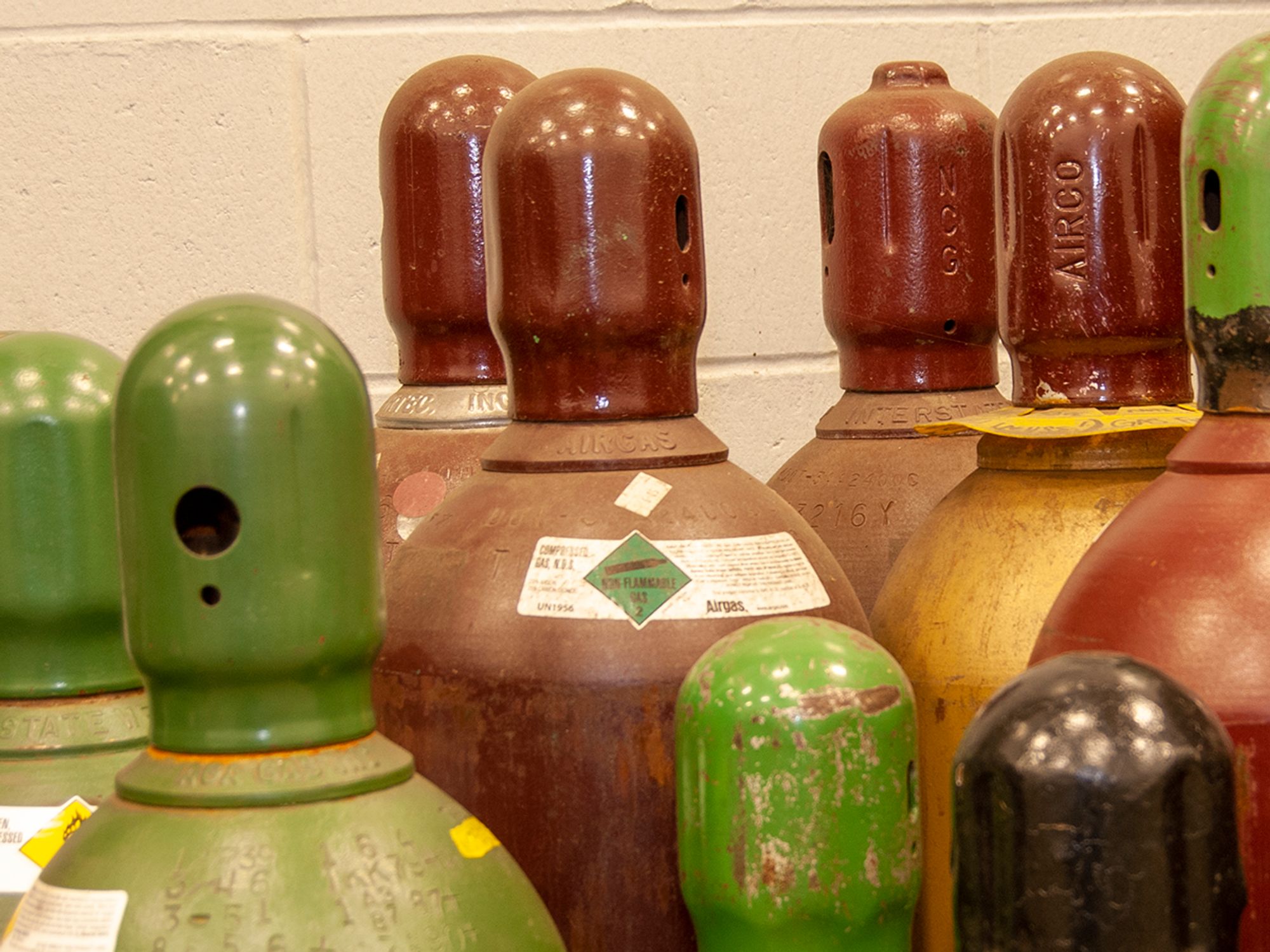InstituteOxygenDipping and CoatingAcetyleneSafety & HealthGeneral Industry SafetyCompressed GasesHazardous Materials Safety - OSHAEnglishAnalysisFocus AreaCompliance and Exceptions (Level 2)USA
Key definitions: Oxygen, acetylene, compressed gases, dipping and coating
['Hazardous Materials Safety - OSHA']

- Familiarization with key terms associated with oxygen, acetylene, compressed gases, and dipping and coating can help employers and employees avoid associated hazards. It is important to recognize and be familiar with key terms and definitions related to oxygen, acetylene, compressed gases, and dipping and coating so that potential hazards are understandable and clear.
Oxygen
- Bulk oxygen system: A bulk oxygen system is an assembly of equipment that includes oxygen storage containers, pressure regulators, safety devices, vaporizers, manifolds, and interconnecting piping. A bulk storage system has a storage capacity of more than 13,000 cubic feet of oxygen, Normal Temperature and Pressure (NTP) connected in service or ready for service, or more than 25,000 cubic feet of oxygen (NTP), including unconnected reserves on hand at the site. The bulk oxygen system terminates at the point where oxygen at service pressure first enters the supply line. The oxygen containers may be stationary or movable, and the oxygen may be stored as gas or liquid.
Acetylene
- DOT: Department of Transportation. The government agency that prescribes requirements for design and marking of cylinders used in transport.
- CGA: Compressed Gas Association. The Occupational Safety and Health Administration (OSHA) references CGA pamphlets for most common acetylene requirements.
- NFPA: National Fire Protection Association. OSHA references NFPA codes for some aspects of acetylene safety.
Compressed gases
- Compressed gas: A gas which when under pressure is entirely gaseous at -50°C (-58°F), including all gases with a critical temperatureat 50°C (-58°F).
- Gases under pressure: Gases that are contained in a receptacle at a pressure of 200 kPa (29 p.s.i.) (gauge) or more, or which are liquefied or liquefied and refrigerated. They comprise compressed gases, liquefied gases, dissolved gases, and refrigerated liquefied gases.
- Inert gas: A gas which does not undergo a chemical reaction in a given situation. Argon and nitrogen are two common examples. Inert gases can still create a hazard by displacing oxygen in confined spaces.
- Flammable gas: A gas having a flammable range with air at 20°C (68°F) and a standard pressure of 101.3 kPa (kilopascal) (14.7 p.s.i.).
- Oxidizing gas: Any gas which may, generally by providing oxygen, cause or contribute to the combustion of other material more than air does.
Dipping and coating
- Adjacent area: Any area within 20 feet (6.1 m) of a vapor area that is not separated from the vapor area by tight partitions.
- Approved: The equipment so designated is listed or approved by a nationally recognized testing laboratory, as defined by 1910.7.
- Autoignition temperature: The minimum temperature required to cause self-sustained combustion, independent of any other source of heat.
- Dip tank: A container holding a liquid other than water that is used for dipping or coating. An object may be immersed (or partially immersed) in a dip tank or it may be suspended in a vapor coming from the tank.
- Flammable liquid: Any liquid having a flashpoint at or below 199.4 °F (93 °C).
- Flashpoint: The minimum temperature at which a liquid gives off a vapor in sufficient concentration to ignite if tested in accordance with the test methods in Appendix B to 1910.1200—Physical Hazard Criteria.
- Lower flammable limit (LFL): The lowest concentration of a material that will propagate a flame. The LFL is usually expressed as a percent by volume of the material in air (or other oxidant).
- Vapor: Any space containing a dip tank (including its drain boards), associated drying or conveying equipment, and any surrounding area where the vapor concentration exceeds 25 percent of the LFL of the liquid in the tank.
